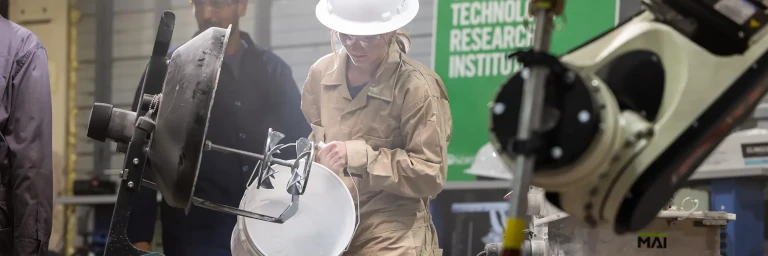
Advanced Transportation Infrastructure Center (ATIC)
Our mission is to advance transportation infrastructure related science, technology, and education.
Our vision is to make a meaningful contribution to safety and durability of transportation infrastructure in the region through autonomy.
University of North Dakota Advanced Transportation Infrastructure Center is dedicated to augment transportation infrastructure design, construction, and maintenance through automation and cutting-edge technologies.
Transportation infrastructure in North Dakota plays a crucial role in national security due to the state's pivotal contributions to food and energy production. ATIC aims to address the needs of this infrastructure while supporting UND's mission of discovery and education.
Goals & Objectives
- Establish Research Programs: Address key challenges in Transportation Infrastructure aligned with UND’s strategic plan and North Dakota’s needs through basic and applied research.
- Educate and Train the Workforce: Provide practical, hands-on education and training opportunities for students, researchers, and professionals in the field of transportation infrastructure to meet the increasing demands of industry for a skilled workforce.
Research Areas of Interest
American Society of Civil Engineers defines more than a dozen categories of Civil Infrastructure Systems. Transportation Infrastructure are facilities for transporting goods, energy, or people including, but not limited to: Aviation (e.g. airports), Bridges, Pipelines, Roads, and Railroads.
Transportation Infrastructure has gone beyond its operational service life, overloaded, and is exposed to new challenges due to climate change. New technologies are required for condition assessment, monitoring, and asset management. Examples of these technologies are non-contact sensing and artificial intelligence for robust preservation and condition assessment.
Even with the most robust preservation practice, construction of new transportation infrastructure is inevitable, mainly due to growing production demand and population growth. Construction practice can benefit from less labor-intensive practices by introducing additive construction.
Workforce Areas of Interest
High demand for skilled workforce in transportation infrastructure nation-wide requires more civil engineering graduates with modern areas of proficiency.
Through internship programs, civil engineering students are hired to be trained on real engineering projects. The interns learn required technical skills such as use of engineering software, preparing documents, and presenting their design to the public.
With the increasing potential of UAS in transportation infrastructure inspection and construction monitoring, the corresponding workforce is utilizing and incorporating autonomous systems, e.g., AI, robotics, etc, to work more efficiently.